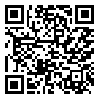1. Deborah C. Beidel BCF, Hersen M. Adult Psychopathology and Diangnosis. 7th ed. New Jersey: Wiley; 2014.
2. Association AP. Diagnostic and Statistical Manual of Mental Disorders DSM-5. 5th ed. Tehran: Arjmand Press; 2013.
3. Furmark T. Social phobia: Overview of community surveys. Acta Psychiatrica Scandinavica. 2002; 105: 84-93. [
DOI:10.1034/j.1600-0447.2002.1r103.x] [
PMID]
4. Kimbrel NA. A model of the development and maintenance of generalized social phobia. Clin Psychol Rev. 2008; 28(4): 529-612. [
DOI:10.1016/j.cpr.2007.08.003] [
PMID]
5. Ollendick TH, Hirshfeld-Becker DR. The developmental psychopathology of social anxiety disorder. Biologic Psychiat. 2002; 51: 44-58. [
DOI:10.1016/S0006-3223(01)01305-1]
6. Rapee RM, Spence SH. The etiology of social phobia: Empirical evidence and an initial model. Clin Psychol Rev. 2004; 24: 737-67. [
DOI:10.1016/j.cpr.2004.06.004] [
PMID]
7. Kagan J, Reznick JS, Snidman N. The physiology and psychology of behavioral inhibition in children. Child Develop. 1987; 58: 1459-73. [
DOI:10.2307/1130685]
8. Kimbrel NA. A model of development and maintenance of generalized social phobia. Clin Psychol Rev. 2008; 28(4): 592-612. [
DOI:10.1016/j.cpr.2007.08.003] [
PMID]
9. Corina L, Gomez R. Unique associations of reinforcement sensitivity theory dimensions with social interaction anxiety and social observation anxiety. Personal Individual Difference. 2014; 60: 20-4. [
DOI:10.1016/j.paid.2013.10.003]
10. Corr PJ. Reinforcement sensitivity theory and personality. Neuro Sci Biobehav Rev. 2004; 28: 317-32. [
DOI:10.1016/j.neubiorev.2004.01.005] [
PMID]
11. Gray JA. Neural systems, emotion, and personality. Madden JIE, editor. New York: Raven Press; 1991: 1991.
12. McNaughton N, Corr PJ. A two-dimensional neuropsychology of defense: Fear/anxiety and defensive distance. Neurosc Biobehav Rev. 2004; 28: 285-305. [
DOI:10.1016/j.neubiorev.2004.03.005] [
PMID]
13. Gray JA, McNaughton N. The neuropsychology of anxiety: An enquiry into the functions of the septo-hippocampal system. 2nd ed. New York Oxford University Press; 2000: 2000.
14. Coplan RJ, Wilson J, Frohlick SL, Zelenski J. A person-oriented analysis of behavioral inhibition and behavioral activation in children. Pers Individ Dif. 2006; 41: 917-27. [
DOI:10.1016/j.paid.2006.02.019]
15. Kashdan TB, Steger MF. Expanding the topography of social anxiety: Anvexperience-sampling assessment of positive emotions, positive events, and emotionvsuppression. Psychol Sci. 2006; 17: 120-8. [
DOI:10.1111/j.1467-9280.2006.01674.x] [
PMID]
16. Tillfors M, Furmark T, Marteinsdottir I, et al. Cerebral blood flow in social phobics during stressful speaking tasks: A PET-study. Am J Psychiat. 2001; 158: 1220-6. [
DOI:10.1176/appi.ajp.158.8.1220] [
PMID]
17. Tillfors M, Furmark T, Marteinsdottir I, Fredrikson M. Cerebral blood flow during anticipation of public speaking in social phobia: A PET-study. Biol Psychiat. 2002; 52: 1113-9. [
DOI:10.1016/S0006-3223(02)01396-3]
18. Kimbrel NA, Meyer EC, DeBeer BB, et al. Reinforcement sensitivity and social anxiety in combat veterans. Pers Individ Dif. 2016; 98: 171-5. [
DOI:10.1016/j.paid.2016.04.008] [
PMID] [
PMCID]
19. Olatunji BO, Cisler JM, Deacon BJ. Efficacy of cognitive behavioral therapy for anxiety disorders: A review of meta-analytic findings. Psychiat Clin North Am. 2010; 33: 557-77. [
DOI:10.1016/j.psc.2010.04.002] [
PMID]
20. Holdevici I, Craciun B. Hypnosis in the treatment of patients with anxiety disorders. Soc Behav Sci. 2013; 78: 471-5. [
DOI:10.1016/j.sbspro.2013.04.333]
21. Lynn SJ, Kirsch I. Essentials of clinical hypnosis: An Evidence-based Approach. American Psychological Association. 2006. 271 p. [
DOI:10.1037/11365-000]
22. Halsband U WTG. Functional changes in brain activity after hypnosis in patients with dental phobia. J PhysiolParis. 2015; 109(4-6): 131-42. [
DOI:10.1016/j.jphysparis.2016.10.001] [
PMID]
23. Azad Fallah P, Dadsetan P, Ezhee J, Moazeni M. Stress: Work systems and brain/behaivioural changes IVIG a secretory. J Psychol. 1999; 3(9): 3-22.
24. Gould RA, Buckminster S, Pollack MH, Otto MW, Yap L. Cognitive-behavioral and pharmacological treatment for social phobia: A meta-analysis. Clin Psychol: Sci Pract. 1997; 4(4): 291-306. [
DOI:10.1111/j.1468-2850.1997.tb00123.x]
25. Otto MW, Safren SA, Hearon BA. Mechanisms of action in the treatment of anxiety disorder. In socialanxiety: Clinical, Developmental and Social Perspectives. 3rd ed2014. [
DOI:10.1016/B978-0-12-394427-6.00027-3]
26. Mattick RP, Peters L, Clark DM. Exposure and cognitive restructuring for social phobia: A controlled study. Behav Ther. 1989; 20(1): 3-23. [
DOI:10.1016/S0005-7894(89)80115-7]







